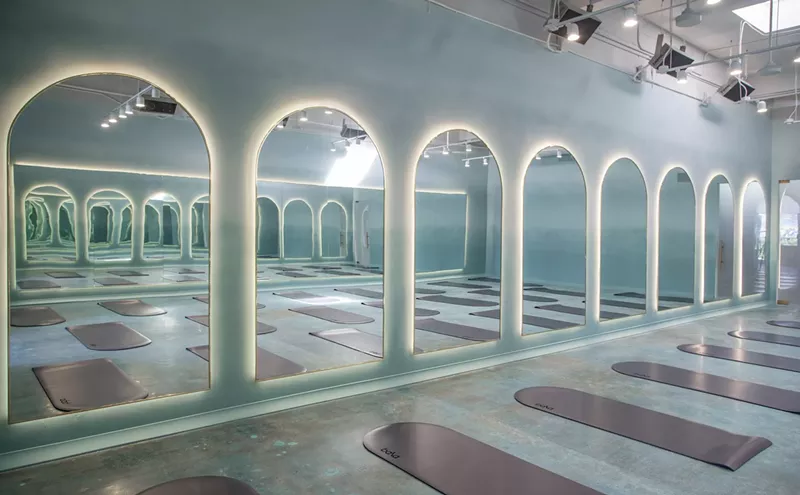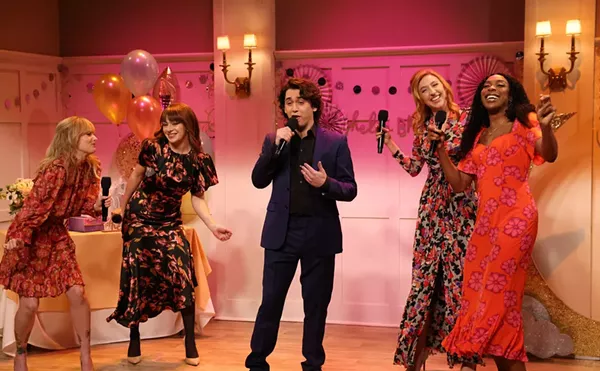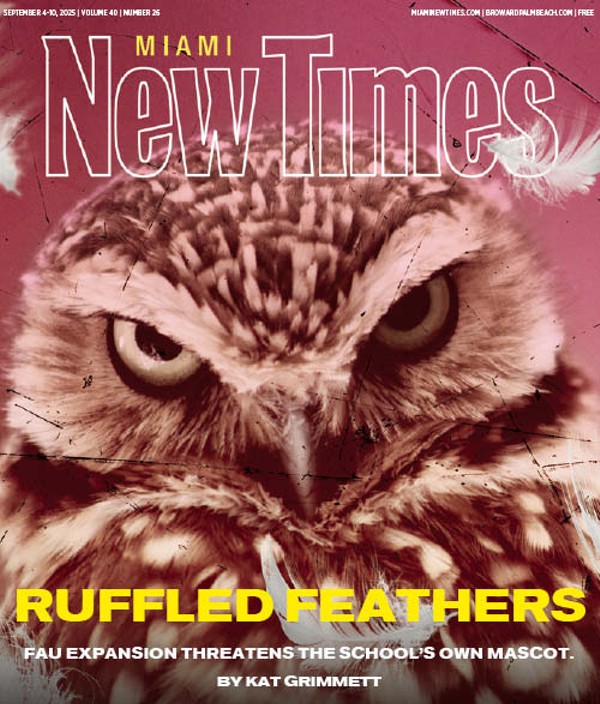Wendy Wischer's new works were on display last month at Diana Lowenstein Fine Arts, where visitors can still view documentation in the form of videos and photographs. Collectively titled "Looking for Home," these pieces are manifestations of wistful emotions in solids and light. Wischer's simple vocabulary of circles, dots, and linear compositions is animated with light. Employing professional lighting systems adapted from the theatrical industry, Wischer relies on subtle special effects to create a radiance in such works as Feeling Blue, a circular nebula of clear glass marbles on the floor, illuminated by a projected gobo pattern with a blue gel. (To those unfamilar with entertainment technology terminology, a gobo pattern is a specific configuration of lights cast on a stage set.) The marbles in Feeling Blue refract the light in a rainbow spectrum; staring at the piece induces a pleasant dizzying effect.
Wischer recently returned from an entertainment technology show in Las Vegas, funded by a Tigertail Productions "artist access" grant for local artists. The restraint in this work puts it at a far remove from the glitz and glamour associated with Vegas productions, and yet the iridescence enhances its minimalist ethic with an irrepressible spirit. Both Feeling Blue and another work, Looking for Home, which employs the same gobo pattern projected directly on the wall, evoke associations with cathedral stained-glass windows in the rose pattern, which radiate from within and speak to the soul.
The theme of personal displacement is evident in Ariadne's Thread, a delicate, hand-knotted ladder made of electro-luminescent (glow-in-the-dark) wire that trails onto the floor, inviting the viewer to ascend, ending just shy of the ceiling. Leaving the gravitational pull of terra firma for the firmament seems to be the possibility suggested here. The three works viewed together form a coherent and elegiac installation.
Under the spell of the more prosaic grade of light from the video projector is Jiae Hwang's installation "I am the smallest planet of my own" at Miami-Dade College's Centre Gallery. The low, oppressive ceilings and black floor of that space disappear in her installation. Rays of light emanating from projectors and the washes of light in her projections, which span the height and length of the wall, distinguish her work from Wischer's focused precision. The singsongy humming of a childlike voice evokes a mood which lulls and accompanies the viewer's perambulations like an airy but portentous soundtrack, effectively slowing down the pace of perception and creating a trancelike environment. Her works benefit from the participatory disruptions of the viewer's shadow, which perpetually interacts with and alters the imagery when moving around the room in front of the projectors.
In the titular work, I am the smallest planet of my own, Hwang's innocent pop sensibility reaches for greater lyricism. Projected in a circular shape on the wall are scenes and landscapes of cozy suburban harmony. Random toys and quotidian objects float past. Objects fall up, fly, and otherwise defy gravity. Backgrounds are upside down. The influence of Swiss video artist Pippilotti Rist is evident in this work, which hypersaturates and sensualizes familiar experiences and objects while also acknowledging their fleeting nature and obsolescence. Hwang's image of a blinking eye (or camera lens) is the perfect metaphor for her wide-eyed delight in the irrationality of the world.
All of Hwang's pieces fall under the umbrella of the exhibition's single title. In one of them, the slow-motion movement of clouds across a wall compels one to scan their wafting vapors for recognizable shapes. But as the viewer approaches the wall, the image resolution breaks down, and the sensation is akin to being thrust inside a giant TV screen. A transparent origami airplane/boat/space vessel appears and disappears in the clouds, suggestive of voyage, but also of unfolding, of being receptive to the flow of nature. The mirror-image configuration of the clouds connotes an inward voyage of self-reflection as well as a journey to the limitless horizon.
In another work, an amalgam of video projection and sculpture, Hwang's ambiguous origami shape rests on the ground and the sky swirls rapidly over it, morphing from cloud-dappled daylight to stellar. The folded flat plane of the origami and the beam of light inspire thought about the shape of the universe and the place of an individual in it.
Hwang's video work is charming and modest while simultaneously open and ambitious. She has probably arrived at the point in her career where she could discard some of the bubblegum pop iconography so familiar to her (and us) and dig a little deeper for her own idiosyncratic vocabulary.
Time-travel must be the avocation of Hung Liu, whose exhibition titled "Relic" at Bernice Steinbaum Gallery mines the past in her portraits of females in China deformed by foot binding. Her use of color and transluscent washes creates a glowing light. Liu's oil canvases, each 66 by 66 inches, are like excavation sites from which the artist unearths imagery and decorative artifacts, which when absorbed and combined in the mind's eye create narrative meaning. More than a little schizoid stylistically, these paintings shift between photo-realist technique and expressionist bravura. The artist clearly relishes superimposing decorative flourishes on top of floral and costume patterns. As technically proficient as they are, these grandiose paintings are ultimately pastiches of Western and Asian styles and fail to bring the plight of their subjects to any real consideration.










